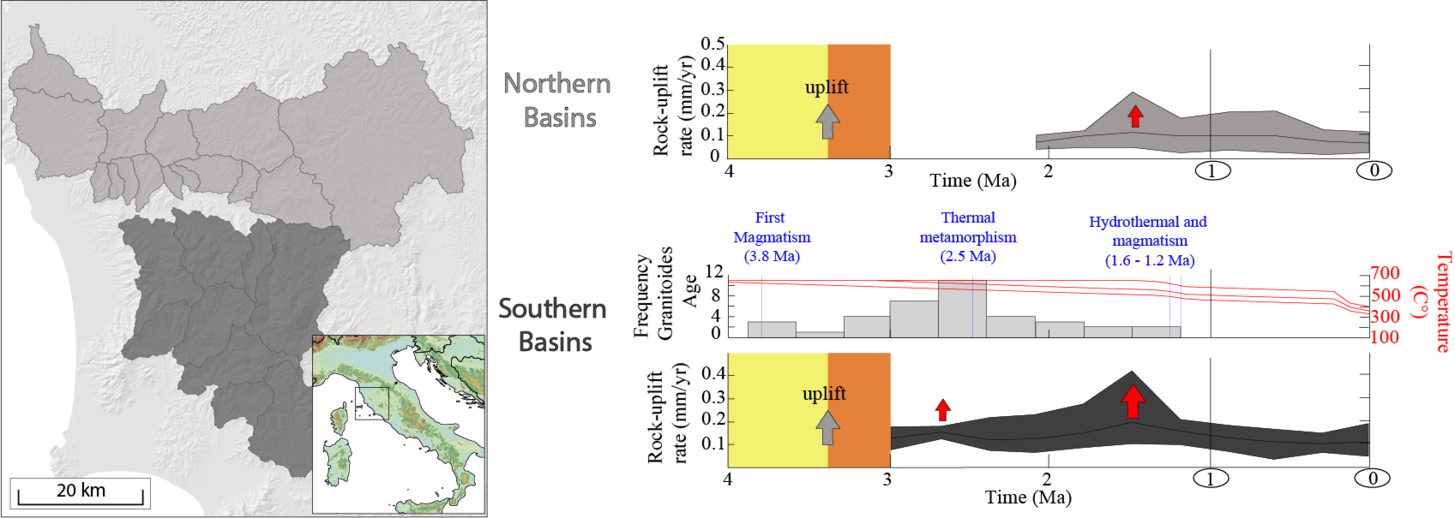Spatio-temporal correlations between magmatic injections and uplift pulses in the Larderello area
Magmatism plays a key role in topographic evolution, yet its long-term impact remains poorly understood. A new study published in Earth and Planetary Science Letters investigates the landscape response to magmatic intrusions in the active geothermal field of Larderello-Travale, located in the Northern Apennines. Since the Late Pliocene, multiple igneous intrusions have caused surface uplift of at least 500 meters. By combining stratigraphic data, morphological analyses, and fluvial inversion models, the researchers were able to quantify the magnitude, rates, and spatial distribution of uplift over the past 3.5 million years.
The study also identifies a clear spatio-temporal correlation between uplift pulses and magmatic injections into the upper crust, dated to approximately 2.7 and 1.6 million years ago. These results highlight a positive feedback between deep magmatic processes and surface responses, such as river incision. Initially, uplift rates were higher north of the current thermal anomaly, with the deformation later migrating southward. This suggests that the deep source of the Larderello-Travale geothermal field may not lie directly beneath the present day thermal anomaly. This correlation opens new perspectives for identifying undocumented plutons that are deep enough to escape detection through surface thermal anomalies, paving the way for more effective geothermal exploration strategies.
References
Lanari, R., Bonini, M., Sembroni, A., Papeschi, S., Del Ventisette, C., Smith, A. G., Lupi M. & Montanari, D. (2025). Topographic signature of magmatic emplacement at depth: The case of the Larderello-Travale Geothermal area (Northern Apennines, Italy). Earth and Planetary Science Letters, 659, 119290.
For information: Riccardo Lanari, CNR-IGG (riccardo.lanari@cnr.it).
